Clocking in at 88 minutes, the 2019 State of the Union was the third longest in U.S. history. Typically, the State of the Union is a highly politicized event, and 2019’s was no different.
Putting as much politics aside as possible, here are highlights of what government workers should know about the State of the Union.
Nothing said about the shutdown
Many government employees, contractors and their families are still dealing with the personal and professional repercussions of the recent 35-day government shutdown. They and the nation have been waiting for a sign that Congress and the president will be able to reach an agreement on federal spending and avoid another shutdown before the Feb. 15 deadline.
Trump did not mention the shutdown or furloughed federal workers during his State of the Union address. He did, however, reiterate his commitment to building a wall on the U.S.-Mexico border, the funding for which was the primary divide that caused the recent shutdown.
Trump also seemed to indicate that, rather than the continuous border wall he’s been pushing for, he may be leaning toward the goal of putting up physical barriers where U.S. Customs and Border Protection (CBP) decides they can be useful.
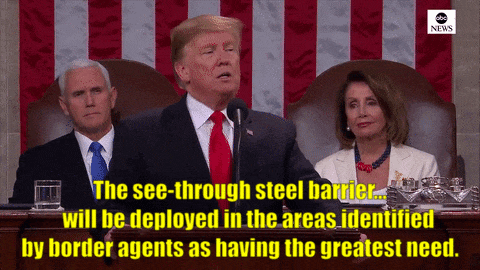
In the official response to Trump’s State of the Union, Stacey Abrams spoke directly about the shutdown and furloughed federal workers.
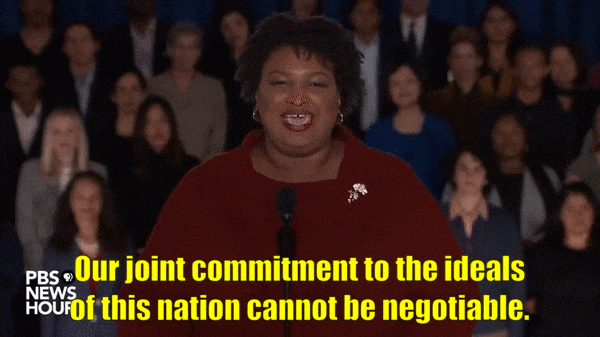
A special standing ovation
Trump took note of the record-setting number of women in both the nation’s workforce and in the 116th Congress. Look behind Trump in the GIF below, and you’ll see Speaker of the House Nancy Pelosi encouraging the 127 women in Congress to rise up and celebrate each other.
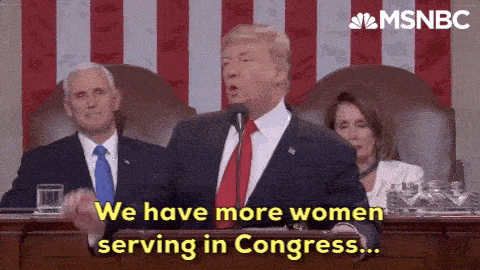
And so they did, with a large portion of the chamber bursting into a “USA! USA!” chant. Many women in Congress (and one of the First Family’s daughters) wore white to the State of the Union as a show of solidarity with women’s rights activists and to honor the suffragettes who fought for women’s right to vote 100 years ago.

A 2030 goal to end HIV/AIDS
As revealed by Politico days before the State of the Union, Trump announced a pledge “to eliminate the HIV epidemic in the United States within 10 years.” In his speech, Trump did not specify any health interventions, patient protections, or other strategies that would be used beyond making it a priority in his budget request to Congress. Health advocates have pointed out that many of the Trump administration’s policies are at odds with this ambitious goal.
In conjunction with the president’s State of the Union announcement, Alex Azar, secretary of the Health and Human Services Department (HHS), published a blog post that outlines four key strategies and states the goal is to reduce new HIV infections by 90 percent by 2030.
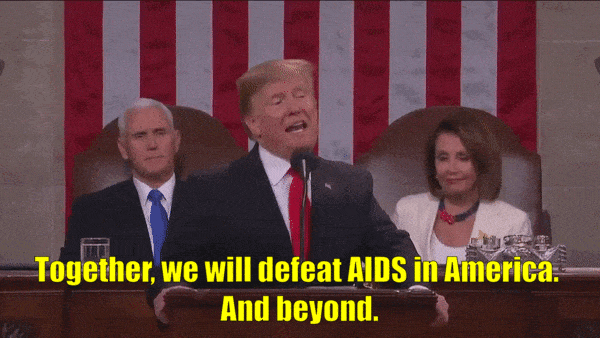
If these highlights have made you eager for the long-form version, watch the State of the Union online at whitehouse.gov/SOTU and the official rebuttal on PBS News Hour on YouTube.
Note: This article is not an opinion about or endorsement of any policies, regulations or orders, nor of the behaviors of elected officials, political appointees, government employees, other individuals, organizations or agencies.
Lauren Girardin is a marketing and communications consultant, freelance writer, and trainer based in San Francisco. She helps organizations engage their communities and tell their stories. Her website is laurengirardin.com and you can connect with her on Twitter at @girardinl.

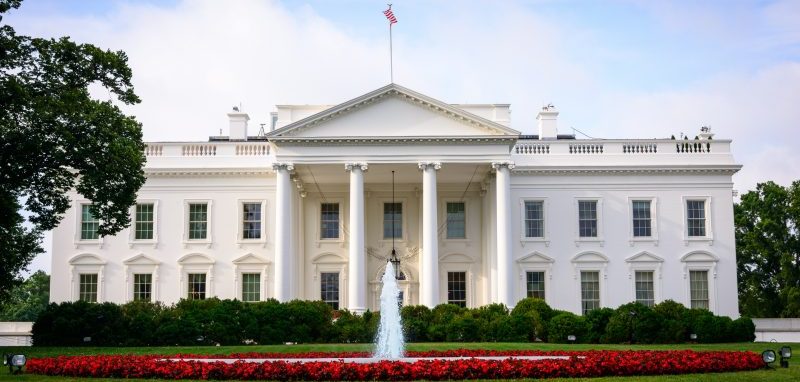



Very great use of GIFs to split up this post and to make it even more consumable for those who didn’t watch the State of the Union!
Lauren, this article is great! Takes me back to three weeks ago. Your use of gifs is on point and I like your consistent linking back to validate your claims.